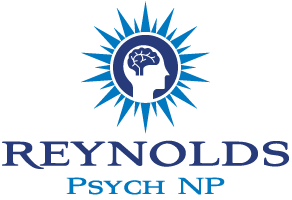You’ve been dealing with the same question for a while now, probably late at night, curled up on the couch, half-listening to your favorite playlist while your mind replays that work meeting or that argument with a close friend. What type of therapy is right for me? If that feels familiar, you’re in the right place. Picking a therapy style is a lot like picking a new hobby: there are so many options that you end up scrolling for hours and still feel stuck. Let’s walk through three popular approaches: CBT, DBT, and EMDR, so you can stop Googling and start healing.
What Type of Therapy Is Right for Me? An Important Question to Ask
Therapy isn’t just an appointment on your calendar; it’s an investment of your time, energy, and emotional bandwidth. And nobody wants to realize (after a handful of sessions) that the approach they choose isn’t compatible with their needs. When you pause and ask, What type of therapy is right for me, you’re giving yourself a fighting chance at real progress.
- Maybe you crave straightforward tools to dial down your anxiety.
- Maybe your emotions feel like crashing waves, and you need a life raft.
- Maybe there’s a memory or two that keeps popping up and wrecking your sleep.
Your answers to these simple prompts will shine a bright light on which path to take.
Cognitive Behavioral Therapy (CBT)
Have you ever noticed how one offhand comment, “You won’t pull that off,” can spiral into “I’m terrible at everything”? That’s your mind’s autopilot at work. CBT helps you switch from autopilot to manual control.
Imagine you’re the director of a play, and your thoughts are the actors. In CBT, you get to rewrite the script. Sessions feel like detective work: you and your therapist pick apart a recent stressor (say, a tense email from your boss), identify the automatic thoughts (“They think I’m incompetent”), and challenge them with evidence (“Wait, my last report got praised”). Then you substitute a balanced thought that actually helps you move forward.
Between sessions, try keeping a simple list or bullet points to help notice and change unhelpful thoughts. It’s easy to do and really works.
If you’re still wondering, What type of therapy is right for me, and notice your inner critic runs the show, CBT could be your backstage pass to a kinder self-dialogue.
Dialectical Behavior Therapy (DBT)
If your emotions come at you like rogue ocean waves—one minute you’re calm, the next you’re wiping tears or screaming at the dog DBT might feel like the perfect surfboard. Unlike CBT, which zeroes in on thoughts, DBT centers on acceptance and coping with intense feelings.
DBT teaches four core skills:
- Mindfulness: Slowing down enough to notice what you feel and think without judgment.
- Distress Tolerance: Getting through storms without resorting to self-sabotage.
- Emotion Regulation: Understanding why you feel what you feel, then dialing it up or down.
- Interpersonal Effectiveness: Asking for what you need and saying no without guilt.
This focus on therapy for emotional regulation is what sets DBT apart from CBT. If you want to master your mood swings instead of letting them master you, DBT could be the answer to what type of therapy is right for me when your feelings feel like wild horses.
Take Ruth, for instance, a client who came in terrified of her anger. Through DBT, she learned to name the physical signs (tight chest, hot face), ride the wave for fifteen minutes, then choose a healthier outlet, like running up her apartment stairs, until the intensity faded. Now, she uses those same skills in her job as an elementary school teacher whenever a student pushes her buttons.
EMDR: Reprocessing Memories That Won’t Let Go
Let’s say you did the thought-journal thing and practiced mindfulness until your head spun, but there’s still that memory playing on loop, maybe something from childhood, maybe an accident that leaves your heart pounding whenever you hear sirens. That’s when EMDR can step in.
How does EMDR therapy work?
Think of your brain like a DVD player that got stuck. EMDR prompts bilateral stimulation, usually side-to-side eye movements, while you hold that troubling memory in mind. It’s similar to how your brain processes experiences during REM sleep. The result? The memory still exists, but it doesn’t hijack your nervous system anymore.
A session typically begins with safety techniques, deep breathing, and a grounding object like a smooth stone in your pocket. Then, you bring up the “target” memory, note the negative belief you tie to it (e.g., “I’m not safe”), and rate how disturbing it feels. From there, you follow your therapist’s finger or a light bar as it moves back and forth, reporting whatever pops into your mind between sets.
By the end of the session or across several sessions, you often feel a noticeable shift: the memory still lives in your head, but it’s more like a neutral photograph than a live horror flick. If you find yourself caught in the question What type of therapy is right for me because bad memories refuse to fade, EMDR deserves a spot on your radar.
CBT vs DBT vs EMDR: Which Fits You?
| Approach | Ideal For | Feel of Sessions |
| CBT | Negative thought loops, mild anxiety | Structured, homework-driven |
| DBT | Intense emotions, self-harm urges | Skills practice, group + individual coaching |
| EMDR | PTSD, deep trauma, intrusive memories | Somatic, bilateral stimulation |
When you hit that wall and ask What type of therapy is right for me, pinpoint where you get stuck: For thoughts, CBT; for feelings, DBT; for memories, EMDR. That match can save you weeks of trial and error.
Blending Methods in Psychotherapy
Here’s the secret: many therapists don’t stop at one label. In Individual Psychotherapy sessions, they mix and match from CBT, DBT, and EMDR to craft a plan that evolves with you. You might start with CBT to calm your inner critic, sprinkle in DBT skills as stress ramps up, and bring EMDR in once you’re ready to tackle deeper wounds.
This custom cocktail means you’re not locked into a single lane. When I meet someone who’s still asking What type of therapy is right for me, I tell them, “Let’s keep our options open and let your progress guide our toolbox.”
How to Choose Your Therapist
- Check Credentials
- Look for LPC, LMFT, LCSW, PsyD/PhD, and specific training in your desired approach.
- Look for LPC, LMFT, LCSW, PsyD/PhD, and specific training in your desired approach.
- Ask About Their Style
- Do they lean more toward talk-heavy, or do they incorporate activities and homework?
- Do they lean more toward talk-heavy, or do they incorporate activities and homework?
- Discuss Logistics
- Inquire about sliding-scale fees, insurance, telehealth vs. in-person, and session length.
- Inquire about sliding-scale fees, insurance, telehealth vs. in-person, and session length.
- Trust Your Gut
- Did you feel heard and respected in that first 15-minute consultation? Good sign.
Armed with these questions, you’ll walk into that first session feeling clear and confident about what type of therapy is right for me.
Common Misconceptions
- “Therapy is just talking.” In reality, many approaches give you concrete exercises and real-world practices.
- “You have to pick only one style.” Skilled therapists often blend methods to suit your changing needs.
- “It should feel comfortable all the time.” Real growth can be uncomfortable—and that’s often where the magic happens.
Next Steps on Your Journey
- Reflect: Is your struggle rooted in thoughts, feelings, or past events?
- Set Goals: Jot down 2–3 outcomes you hope to see in 3 months.
- Research: Scan directories like Psychology Today, filter for specialties and budgets.
- Reach Out: Book introductory calls and trust your instincts about fit.
- Commit: Give it time; change rarely happens overnight, but consistency pays off.
Key Takeaways!
Answering what type of therapy is right for me is a personal quest, and only you can find your path. Whether you tackle unhelpful thoughts with CBT, learn to surf emotional waves with DBT, or reprogram stuck memories with EMDR, you’re taking a brave step toward reclaiming your life.
Ready to know what type of therapy is right for you?
Connect with Reynolds Psych NP today and explore whether CBT, DBT, or EMDR aligns with your healing journey. Call (262) 999-7350 or email [email protected] to take the first step toward mental wellness.
Frequently Asked Questions
How do I know which therapy I need—CBT, DBT, or EMDR?
It depends on your main struggle: CBT helps with negative thinking, DBT with intense emotions, and EMDR with unresolved trauma. Start by identifying where you feel most stuck.
What’s the difference between CBT and DBT?
CBT focuses on changing negative thoughts. DBT, a form of CBT, adds emotional regulation, mindfulness, and relationship skills, great for those with strong emotional swings.
Is EMDR only for PTSD?
No. EMDR also helps with anxiety, trauma, and painful memories that feel unresolved, especially when talk therapy hasn’t worked.
Can I combine CBT, DBT, and EMDR?
Yes. Many therapists use an integrated approach designed specific to your needs. Combining methods can enhance healing.
How long until I see results?
It varies. CBT may show results in weeks; EMDR can take longer for deeper issues. Progress depends on your goals, consistency, and the therapist’s fit.







